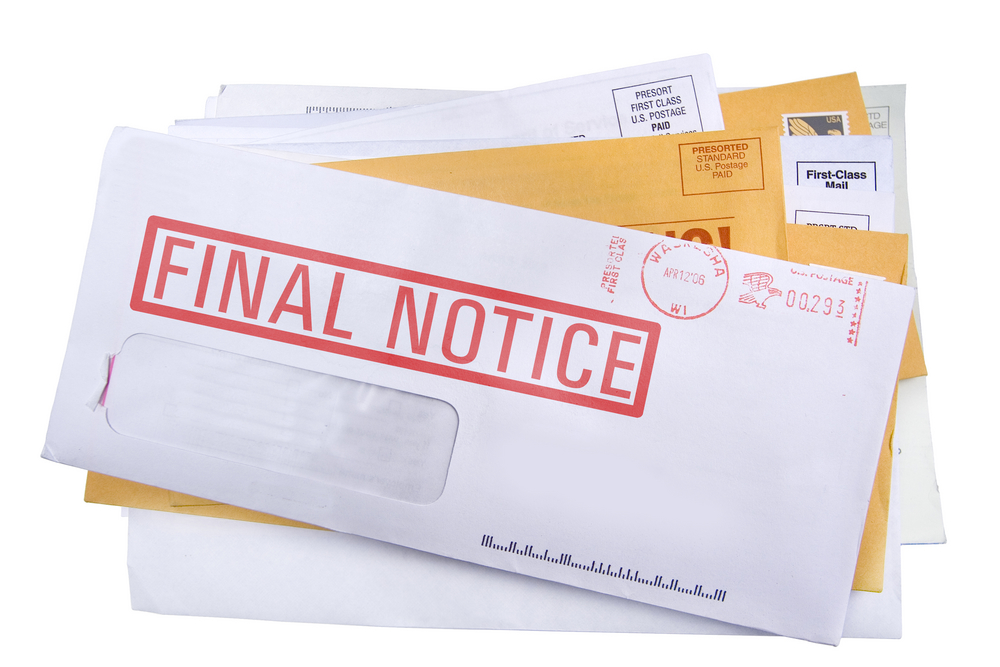Have you found yourself staring at a Notice of Default? In its simplest terms, a Notice of Default is the first step a bank or lender will take toward the process of a non-judicial or judicial foreclosure on a property, most likely due to an outstanding loan. No one wants to deal with the tiresome foreclosure process, but by understanding what a NOD is, borrowers can better identify a route to resolving this official legal complaint. A NOD should be taken seriously to avoid jeopardizing one’s financial health and future
In this article, CT Homes will explore what a Notice of Default is in full detail, cover how a Notice of Default works once a borrower receives the complaint, and discuss how CT Homes can help!
What is a Notice of Default?
A Notice of Default is a public notice filed with a state court that legally kickstarts the process of foreclosure. NOD requirements and procedures will vary based on the specific state regarding whether or not they impose a non-judicial or judicial foreclosure process. They are generally posted on the property (on a front door or window) to notify the borrower of a mortgage that they are in default on a loan. Borrowers might default on a loan because they’ve fallen behind on mortgage payments, requiring the bank to take legal steps to receive those payments or see their investments resolved. A NOD is filed by lenders once their investments go into default status, and is recorded against the property itself.

After a NOD is filed and foreclosure actions are documented and taken, credit bureaus are notified. Foreclosure proceedings and actions may impact a borrower’s credit score negatively, which is bad news for any future mortgage or loan applications. The NOD will include many crucial details, most importantly, the time the borrower has to pay the outstanding balance before the lender seizes the property. Every NOD will include applicable information surrounding the property, typically such as:
- The name and address of the borrower
- The name and address of the lender
- The property’s legal address
- The actions required to cure the default
- The deadline
- Details on the lender’s actions if the deadline passes without resolution
How Does a Notice of Default Work?
If borrowers wish to avoid experiencing their lender activate the lien and potentially seize collateral for foreclosure, they must understand how NODs work to take the appropriate steps. NODs need to be taken seriously, as your lender is already taking the situation seriously by issuing one. The lender will specify what actions have breached the original mortgage contract, detailing the number of delinquent payments permitted in the contract before a NOD is filed. Typical mortgage contracts will permit a window, usually 180 days, of missed payments before they will take action to file a NOD.
Realistically, if a borrower has received a NOD, it’s not a sudden surprise. There has been a pattern of missed payments that would signal a NOD to be filed. In terms of the chain of events, after the NOD is filed, a lender will activate the perfected lien recorded with the mortgage closing, later seizing collateral for foreclosure. Once this happens, the lender can take legal action to ask the borrower to vacate the home or property. Each NOD is unique, so occasionally, the lender will allow the borrower to negotiate by paying off the debt or settling. Each case varies.
What Does a Foreclosure Notice of Default Mean for Borrowers?
While many NODs will result in foreclosure, there are exceptions. Lenders are financial institutions that are simply trying to minimize investment risk, which results in the automation of many NODs to be filed with the state. For those that have been working with their lender or bank for a long time, the lender may be simply filing the NOD to follow protocol but is willing to be flexible in accommodating the borrower with choices for avoiding foreclosure. The lender might be willing to negotiate the repayment window, help identify ways to get the account up to date, etc. Some NODs may include a negotiation grace period before the next foreclosure steps are taken, which is when a borrower should jump on an opportunity to discuss their option. In some cases, a lender may serve a delinquent borrower with a Notice of Intention instead of a NOD to give the borrower more time to negotiate a solution. The lender may be simply filing the NOD to begin the discussion of bringing the mortgage up to date instead of taking foreclosure steps, which can be financially worrisome.
We can close quickly! Get an easy, no-nonsense cash offer for your property today! Click Here!
Avoid Foreclosure and Sell Your Home Fast with CT Homes!
Borrowers faced with a looming NOD should begin by carefully examining the official complaint, taking note of payment windows and breaches of the mortgage contract. Contact your lender to begin a potential negotiation, as no one wants to deal with the consequences a foreclosure could create. If you think the best option is to sell your home, you’re in luck. CT Homes specialize in CASH AS-IS offers and can close in as soon as 7 days! Contact CT Homes today to learn more!






